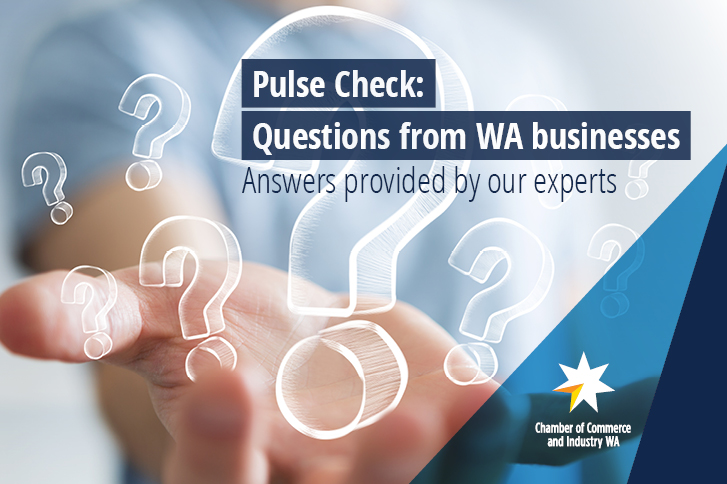As a CCIWA Member, you get unlimited access to our Employee Relations Advice Centre (ERAC). We are here to help you manage your employee relations needs. This includes prompt advice on your circumstances, consulting, documents such as kits and guides and up-to-date industrial relations information.
Here are some of this month’s frequently asked questions that have come through our advice centre.

Q: I have an employee who wants to take parental leave, however their partner is also on parental leave. Can they take the leave at the same time?
A: With the changes to the Fair Work Act 2009 (Cth) in July 2023, restrictions to parents taking concurrent leave were abolished. Each parent can now access their 12-month parental leave independently of the other. This means that both parents could be on parental leave at the same time.
The leave of each parent can start within 24 months of the date of the birth of the child (or earlier if the leave is for a pregnant employee) but each period of leave must end at the 24-month mark of the date of birth. Within the 24-month period each parent can start their leave whenever they choose to, subject to usual notice and evidence requirements.
Q: An employee has completed their 12-month parental leave and has requested an extension. We can’t accommodate this, what can we do?
A: Employees have the right to request an extension of up to 12 months beyond the initial 12-month entitlement to parental leave. The employee must put the request in writing and do so at least four weeks before their parental leave is due to end.
Employers who cannot accommodate the request must:
- Discuss the request with the employee;
- Genuinely try to reach an agreement with the employee;
- Consider the consequences to the employee of refusing the request; and
- State the reasonable business grounds on which the refusal is based.
The employer needs to put the response in writing and outline the reasons for the refusal. This includes the business grounds for refusal and how they relate to the request. The employer must also confirm in writing what period they may be able to agree to, and if they can’t agree to any extension at all, they need to state that.
Employees can take disputes about a refusal to extend parental leave to the Fair Work Commission if discussions between the employee and the employer at the workplace level do not resolve the dispute. The Commission will usually resolve these disputes by conciliation or mediation, and in exceptional circumstances by arbitration.
Q: An employee who is pregnant has raised that she feels it is not safe for her to continue working in her current role. What are our obligations?
A: In circumstances where the employee is fit for work, but it is not advisable for them to continue in their current role, the employer has an obligation to look for a safe job. However, the employee must present evidence that would satisfy a reasonable person that they should not continue in their current role because of either an illness or risks associated with the pregnancy, or hazards connected to that role. In most instances, this would be a medical certificate.
If there is a job available that would meet the requirements of the evidence provided by the employee – i.e. a “safe job”, the employer must transfer the employee to that role with no other changes to the terms of employment and the employee must be paid at their full rate of pay. The safe job should be at the same number of ordinary hours as the original position, unless the employee agrees to a different number of ordinary hours.
However, if no safe job is available, the employee will need to go on ‘paid no safe job’ leave, which is paid at the base rate of pay.
Q: Can an employee take flexible parental leave even after returning to work?
A: Each employee in a couple is entitled to up to 100 days of flexible parental leave, to be taken within 24 months of the birth of the child. For a pregnant employee the period can start up to six weeks prior to the expected date of birth. These days form part of the 12-month entitlement to parental leave and can be taken after the employee returns to work. It could also be the only form of leave the employee chooses to take.
As part of the employee’s notice to the employer of taking parental leave, the employee must specify how many flexible days they intend to take. Prior to taking a flexible day they must also provide at least four weeks’ notice (or as soon as practicable) to confirm which day they intend to take leave.
It is important to note that employers are not able to reject the leave request, however by being provided with notice, businesses will have the opportunity to plan ahead to minimise any impact to the business.
If you have any questions about employment contracts, contact our Employee Relations Advice Centre on 9365 7660 or email [email protected], or if you would like to speak to one of our employment lawyers, email [email protected].



